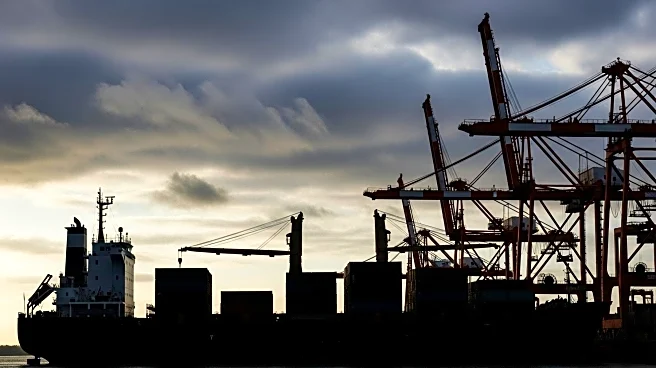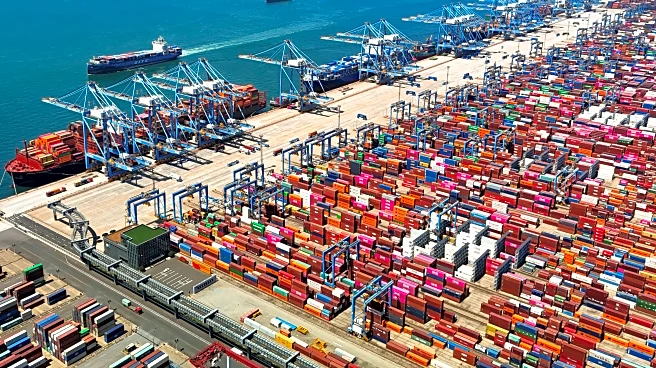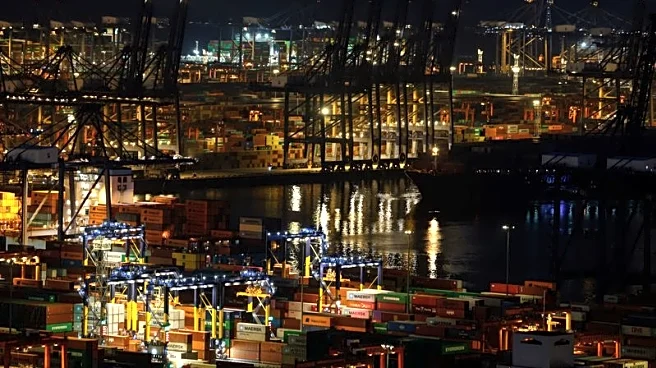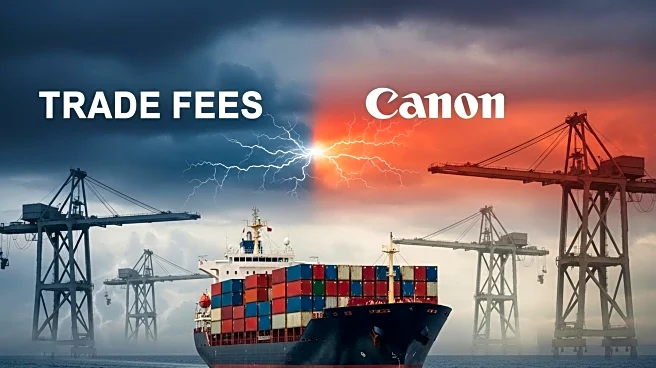What's Happening?
China has announced new port fees targeting U.S.-owned vessels docking in the country, in response to planned American port fees on Chinese ships. The fees, set at 400 yuan ($56) per net ton per voyage, will apply to vessels owned or operated by American companies, ships built in the U.S., or those flying the American flag. These fees will increase annually until 2028, reaching 1,120 yuan ($157) per net ton. The move is part of a series of retaliatory measures by China ahead of trade talks between President Trump and Chinese leader Xi Jinping. China's Ministry of Transport described the fees as countermeasures against what it views as discriminatory U.S. practices, which it claims undermine international trade order.
Why It's Important?
The imposition of retaliatory port fees by China highlights the escalating trade tensions between the U.S. and China. These measures could impact the shipping industry, particularly U.S.-owned and operated vessels, which account for a significant portion of the global fleet. The fees could lead to increased operational costs for American shipping companies, potentially affecting freight rates and trade dynamics. The broader implications include strained economic relations and potential disruptions in international trade, as both countries continue to engage in tit-for-tat measures.
What's Next?
The new port fees are set to take effect on October 14, coinciding with the U.S. implementation of similar fees on Chinese vessels. The upcoming meeting between President Trump and Xi Jinping at the Asia-Pacific Economic Cooperation forum may provide a platform for addressing these trade disputes. However, the ongoing exchange of retaliatory measures suggests that tensions may persist, potentially leading to further economic and diplomatic challenges.
Beyond the Headlines
The introduction of these fees reflects deeper geopolitical tensions between the U.S. and China, with both nations leveraging economic tools to assert their positions. The situation underscores the complexities of international trade relations and the potential for long-term shifts in global economic alliances. The focus on shipping and rare earth exports highlights strategic areas where both countries are seeking to gain leverage.












